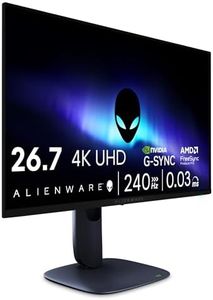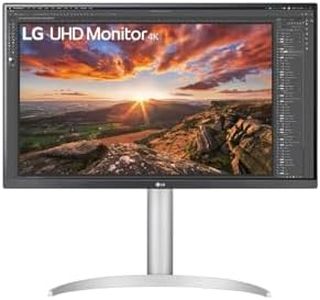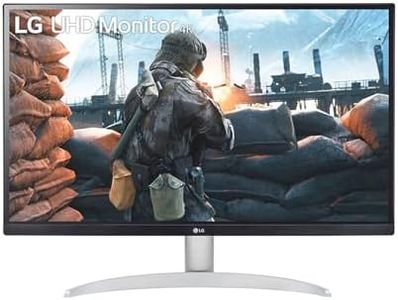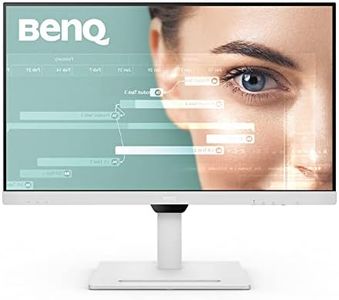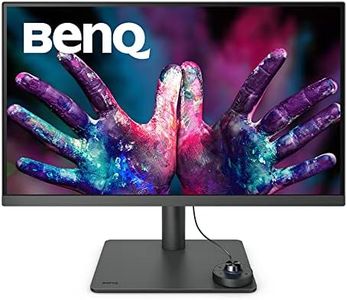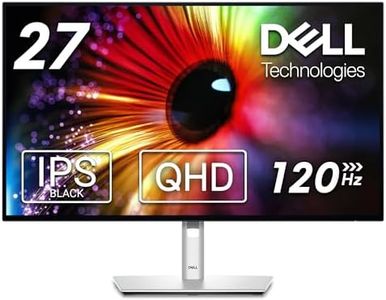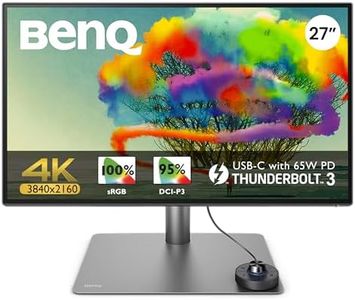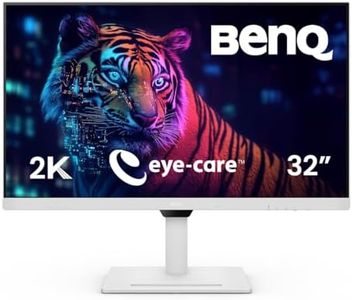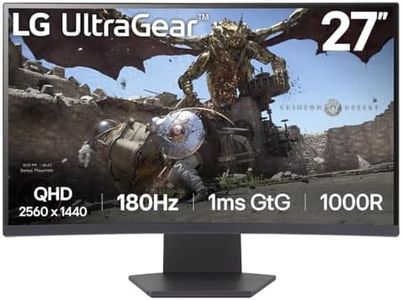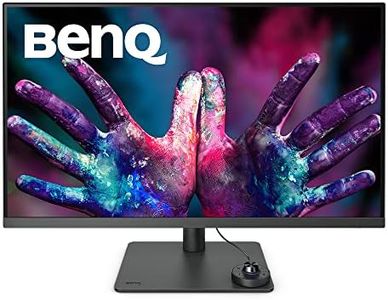We Use CookiesWe use cookies to enhance the security, performance,
functionality and for analytical and promotional activities. By continuing to browse this site you
are agreeing to our privacy policy
10 Best Monitors For Graphic Design
From leading brands and best sellers available on the web.Buying Guide for the Best Monitors For Graphic Design
When choosing a monitor for graphic design, the main goal is to ensure that what you see on screen accurately represents your work, especially in terms of colors, details, and clarity. For designers, this means looking beyond basic specifications and focusing on features that support color accuracy and comfortable long hours of use. It's important to understand each technical aspect so you can select a monitor that matches your workflow and creative needs.Panel TypeThe panel type determines how a monitor displays colors and manages viewing angles. For graphic design, IPS (In-Plane Switching) panels are the best, as they offer consistent and accurate colors with wide viewing angles, so your work looks the same from different positions. Other types like TN (Twisted Nematic) and VA (Vertical Alignment) are more suited for gaming or general use, as they can have issues with color shift and angle limitations. If color accuracy is your main concern, stick with IPS panels.
Color Gamut CoverageColor gamut refers to the range of colors a monitor can display, with common spaces being sRGB, Adobe RGB, and DCI-P3. For most graphic design work, you want a monitor that covers at least 99–100% sRGB for web use, or higher Adobe RGB and DCI-P3 coverage for print or video work. The higher the percentage, the more colors you see, which allows more accurate editing. Pick according to your main design focus: sRGB for digital projects, Adobe RGB/DCI-P3 for print or video.
Color Accuracy (Delta E)Delta E is a number that tells how close a displayed color is to the real or intended color; a lower value means better accuracy. For graphic design, a Delta E below 2 is ideal, as it means you won't see noticeable color differences. If you want professional-grade performance, look for monitors that specify factory calibration and give Delta E values to ensure what you see is what gets printed or published.
ResolutionResolution is about how many pixels the monitor shows, affecting the sharpness and clarity of your images and text. For most graphic design work, a minimum of 1920x1080 (Full HD) is basic, but if you often work with detailed images or large layouts, 2560x1440 (QHD) or 3840x2160 (4K) will give much more space and detail. Choose higher resolution if your workspace and graphics card can handle it, as it helps with fine edits and multitasking.
Screen SizeScreen size impacts how much of your design you can see without zooming or scrolling. For design work, 24 to 27 inches is a sweet spot for single monitor setups, with anything larger (32 inches or more) offering even more space for multitasking or split-window editing. Pick a size that’s comfortable for how close you sit to your monitor and the detail level of your work; sometimes a larger monitor can reduce eye strain and make editing more efficient.
Refresh RateRefresh rate tells you how many times per second the image refreshes. For graphic design, 60Hz is standard and usually sufficient, as the focus is on color and detail rather than motion smoothness. Higher refresh rates are more important for gaming or video work, but unless you do both, prioritize accuracy and resolution over a high refresh rate.
Ergonomics and ConnectivityGood ergonomics mean the monitor's height, tilt, swivel, and rotation can be adjusted for comfort, which matters during long design sessions. Connectivity options (like HDMI, DisplayPort, and USB-C) determine what devices you can easily connect. Consider what your computer uses, and whether you’ll need to attach additional devices like tablets or external drives. Choose a monitor that supports easy and flexible adjustments and has the ports you regularly need.
Matte vs. Glossy FinishThe screen’s finish affects reflections and glare. Matte finishes help reduce reflections and are generally more comfortable for long work sessions under varied lighting, which helps you focus on your colors. Glossy screens may show colors more vibrantly but can cause distracting reflections. Your working environment should guide you; pick matte if you have lots of windows or overhead lights.
